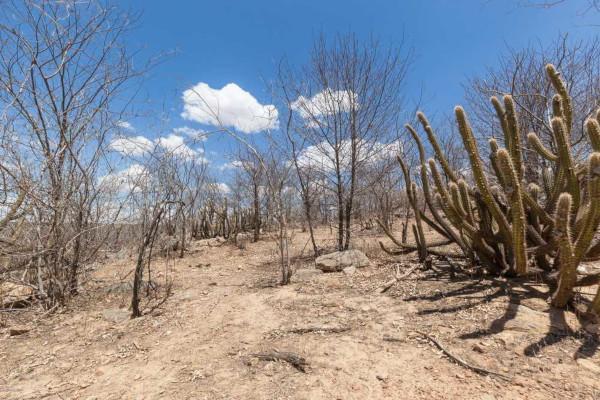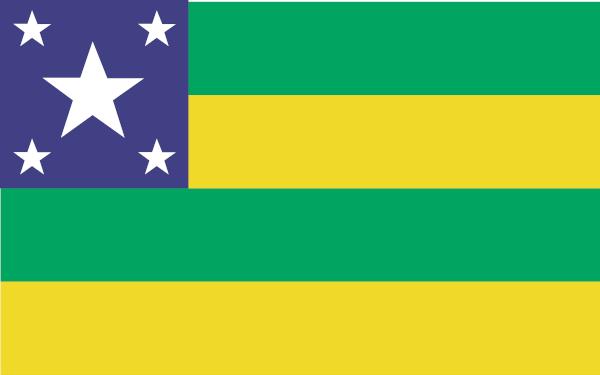O North East it is the Brazilian region that has the largest number of states, nine in all (Alagoas, Bahia, Ceará, Maranhão, Paraíba, Pernambuco, Piauí, Rio Grande do Norte and Sergipe). Its territorial extension is 1,554,257.0 Km2 and, according to data from the Brazilian Institute of Geography and Statistics (IBGE), it has a population of 53,081,950 inhabitants.
Due to the different physical characteristics it presents, the Northeast Region is divided into four sub-regions: mid-north, forest zone, agreste and sertão. Understanding the peculiarities of the northeastern sub-regions is of fundamental importance for the analysis of the social relations established there, which directly reflect on economic activities developed.
Normally, the Northeast is seen as a place of poverty, drought and other socioeconomic problems. However, one must break with these prejudiced ideas, the study of sub-regions provides an in-depth analysis of this region so rich in natural beauty and cultural manifestations.
mid north – is a transition strip between the Amazon and the semi-arid hinterland of the Northeast, comprising the states of Maranhão and western Piauí. The natural vegetation of this area is the forest of coconuts, carnaubas and babassu, mostly. Has higher rainfall in the west. It is an economically underdeveloped region, where plant extractivism prevails, practiced in the cocai forest remnant (babaçu), traditional cotton, sugar cane and rice agriculture, in addition to extensive cattle raising.
Sertão – is an extensive area with a semiarid climate, known as the “Polígono das Droughts”. It comprises the center of the Northeast Region and is present in almost all states. This northeastern sub-region has the lowest demographic index in the Region.
Rainfall rates are low and irregular, with periodic droughts. The typical vegetation is the caatinga. The São Francisco river basin is the largest in the region and the only source of perennial water for the populations that inhabit it. along its banks, it is also used for irrigation and as a source of energy through hydroelectric plants such as the one in Sobradinho (BA). The largest population concentrations are in the valleys of the Cariri and São Francisco rivers. The main economic activity is extensive cattle raising and beef. Other activities developed in the Sertão are: irrigated cultivation of fruits, flowers, sugar cane, corn, beans, cotton long fiber (in Vale do Cariri, Ceará), salt extraction (Cearense and Potiguar coastline) and tourism in cities coastal areas. The industry is based on the textile and clothing hub. Public policies are necessary for socioeconomic development in the northeastern Sertão, providing quality of life for its population.
wild – corresponds to the transition area between the semiarid hinterland and the forested area, which is humid and full of swamps. This sub-region comprises the states of Rio Grande do Norte, Paraíba, Pernambuco, Alagoas, Sergipe and Bahia. The main economic activity in the driest stretches of the agreste is extensive cattle raising; in the wetter stretches it is subsistence agriculture and dairy farming. Small and medium-sized properties predominate with the cultivation of cotton, coffee and sisal (a plant from which a fiber used to make carpets, bags, ropes, etc. is extracted). Another prominent element in the local economy is tourism, with parties that attract crowds, such as the June festivals.
Wood zone – Also known as the Continental Coast, this sub-region comprises a coastal strip of up to 200 kilometers wide that extends from Rio Grande do Norte to southern Bahia. It has the largest population concentration in the Northeast and is the most urbanized sub-region. The climate is tropical and humid and the soil is fertile due to regular rainfall. The natural vegetation is the Atlantic Forest. The cultivation of sugar cane is the main economic activity practiced in Zona da Mata. Other economic activities developed are: oil extraction, the cultivation of cocoa, coffee, fruits, tobacco, subsistence farming, significant industrialization, the production of sea salt is also noteworthy, mainly in Rio Grande do Norte, in addition to the tourist activity that attracts millions of visitors to the beautiful beaches Northeastern regions.
Do not stop now... There's more after the advertising ;)
By Wagner de Cerqueira and Francisco
Graduated in Geography
Brazil School Team


